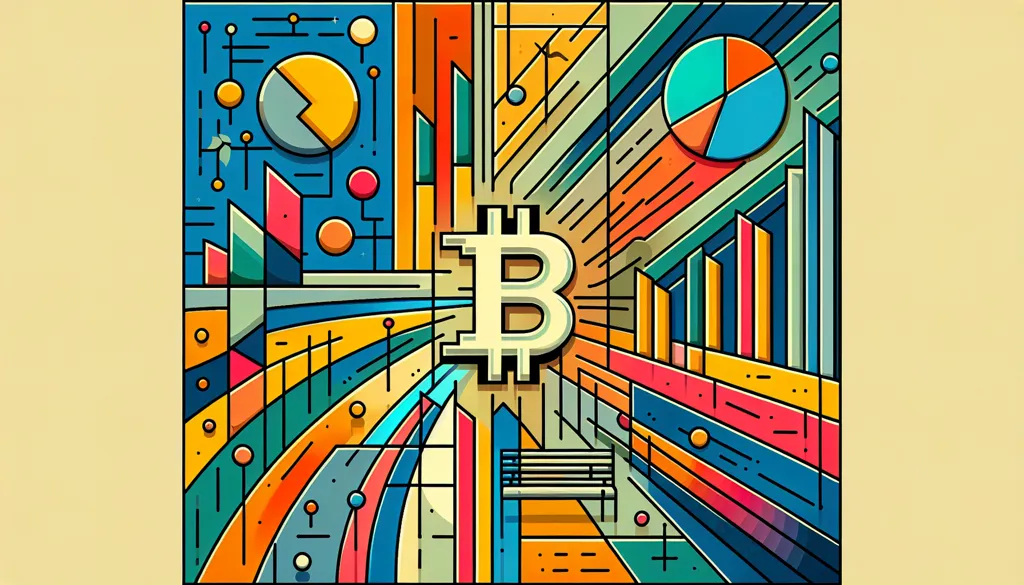Bitcoin's Role in the Future of U.S. Financial Systems: A Balanced Perspective
As a mother raising two kids in Kansas, I often think about the future we're building for them. The world of finance, a cornerstone of stability, seems to be on the brink of transformation. One major player in this shift is Bitcoin, a digital currency that, despite its controversies, is being considered as a potential solution to looming fiscal challenges in the U.S. economy. This article explores the potential scenarios where Bitcoin could play a role, the implications of its adoption, and the challenges that lie ahead, drawing insights from various expert analyses.
Understanding the U.S. Fiscal Crisis and Bitcoin's Potential
Avik Roy, in his analysis, outlines a fiscal crisis that could hit the U.S. by 2044 if current financial trends persist. The Congressional Budget Office predicts a significant increase in federal debt, potentially reaching staggering figures that could destabilize the economy. Amidst this financial turmoil, Bitcoin emerges as a potential alternative, offering a decentralized and potentially more stable store of value compared to the traditional U.S. dollar.
Roy presents three scenarios for the U.S. government's response to this crisis: a restrictive approach that opposes Bitcoin, a palsied scenario where political division hinders decisive action, and a munificent scenario where Bitcoin is integrated into the monetary system. Each scenario carries its own set of implications for the economy and society at large.
The Restrictive Scenario: Resistance to Bitcoin
In this scenario, the government might take aggressive measures to suppress Bitcoin's growth, fearing its challenge to the U.S. dollar. Historical precedents, such as the Roman Empire's price caps or the U.S. gold confiscation during the Great Depression, illustrate how governments have traditionally responded to monetary threats. This path could lead to financial repression, where economic freedoms are curtailed to maintain currency stability.
Such measures might include strict regulations, high taxes on Bitcoin transactions, or even attempts to ban its use. While this could temporarily stabilize the dollar, it risks alienating a growing community of Bitcoin users and investors, potentially driving innovation and capital offshore.
The Palsied Scenario: Political Paralysis
The palsied scenario involves political gridlock, preventing any substantial action for or against Bitcoin. Current political polarization in the U.S. suggests this is a plausible outcome. Without decisive policy, Bitcoin might continue to grow organically, with its decentralized nature offering a haven for those seeking financial autonomy.
This scenario could lead to a fractured financial landscape where Bitcoin coexists with traditional currencies but lacks formal recognition or integration. While it allows for some individual financial freedom, it also leaves the economy vulnerable to the same systemic issues that plagued it before.
The Munificent Scenario: Integration and Innovation
Arguably the most optimistic outcome, this scenario sees the U.S. embracing Bitcoin's potential, integrating it into the financial system as a complementary asset to the dollar. This approach might involve using Bitcoin to back U.S. debt or as a part of the national reserve, a move that could stabilize the economy and reduce reliance on fiat currency.
Countries like El Salvador have already experimented with similar strategies, adopting Bitcoin as legal tender. If the U.S. follows suit, it could lead to a more resilient economy, with Bitcoin providing an alternative to inflationary pressures. However, this would require significant regulatory adjustments and a shift in how financial systems are traditionally managed.
Challenges and Criticisms
Despite its potential, Bitcoin's path to integration is fraught with challenges. Its notorious volatility poses a risk for those seeking stability, while the environmental impact of its energy-intensive mining process raises sustainability concerns. Regulatory uncertainty also looms large, with governments worldwide grappling with how to control and tax digital currencies effectively.
Moreover, Bitcoin's decentralized nature, while a strength, also means it can be used for illicit activities, complicating its acceptance by mainstream financial systems. Balancing these risks with its potential benefits will be a crucial challenge for policymakers and stakeholders.
Conclusion: A Balanced Approach
As we navigate these complex financial landscapes, it's essential to maintain a balanced perspective. Bitcoin offers a glimpse into a future where individuals have more control over their financial destinies, but it also challenges traditional systems that have provided stability for decades. As a mother, I hope for a future where innovation and stability coexist, providing a secure foundation for the next generation.
The road to integrating Bitcoin into the U.S. financial system will require careful consideration of its risks and opportunities. By fostering dialogue and cooperation among policymakers, investors, and the public, we can work towards a financial future that embraces the best of both worlds — the innovation of digital currencies and the stability of traditional finance.

